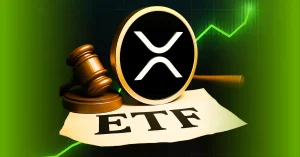Multichain DEXs are on the rise with new protocols enabling them

Decentralized exchanges (DEXs) have become increasingly popular in recent years due to their ability to offer users a high degree of control over their assets and a more secure trading environment than centralized exchanges.
However, one major limitation of DEXs is their inability to support cross-chain and margin trading. There are multiple decentralized exchange protocols that aim to overcome this limitation by enabling DEXs to support cross-chain trading, margin trading and other features.
Injective Protocol is a decentralized exchange protocol built on Cosmos, a decentralized and interoperable blockchain ecosystem. Injective Protocol enables DEXs to support cross-chain trading and margin trading, allowing users to trade assets from different blockchain networks in a single platform.
AliumSwap is a decentralized exchange that supports multiple blockchain networks. In addition, it has a feature called Hybrid Liquidity that aims to simplify the trading process by consolidating it into one platform.
How can DEXs enable cross-chain trading?
One of the key challenges in enabling cross-chain trading on a DEX is the need to reconcile the different ledgers and order books of the various blockchain networks involved. Injective Protocol addresses this challenge by using what it calls “relayers.”
Relayers are decentralized nodes responsible for facilitating the trade of assets across different chains. They act as intermediaries, holding assets in escrow and facilitating the exchange of assets between traders.
When a user wants to trade an asset from one blockchain network for an asset on another network, they can place an order on a DEX that runs on Injective Protocol. The relayer will then take the user’s order and send it to the appropriate blockchain network, which matches it with a counterparty.
The relayer will also facilitate the transfer of the assets between the two parties, enabling the trade to be completed. This process allows users to trade assets from different blockchain networks in a single platform, overcoming one of the major limitations of traditional DEXs.
Eric Chen, co-founder and CEO of Injective, told Cointelegraph, “The future of DeFi is cross-chain composability. While most financial primitives (trading, lending, borrowing, leverage, etc.) have been built in DeFi, when they are siloed as standalone apps, there’s so much left to be desired. What everyone wants are DApps that can build upon each other.”
Recent: Crypto lender Salt makes comeback with $64.4 million funding
AliumSwap has initiated the integration of its cross-chain functionality with the Polygon network, with plans to integrate with OKChain in the near future. To facilitate the exchange of tokens between BNB Chain and the Polygon network, the user must first select the chain and the token to be swapped.
Next, they need to select the Polygon network and the desired receiving token. Finally, they need to input the number of tokens to be swapped and initiate the transaction.
AliumSwap’s ALM token operates as a transitional asset in the token exchange process. Specifically, the exchange process involves a conversion of the original token A from its originating blockchain to the ALM token and, subsequently, to the new token B on the target blockchain.
Brent Xu, CEO and founder of Umee, a cross-chain DeFi hub built on the Cosmos SDK, told Cointelegraph:
“Cross-chain trading is very important, blockchains right now are like the early internet. That is when there was only ARPANET and a bunch of intranets that were not connected. It wasn’t until the invention of a protocol called TCP/IP that connected everything together.”
He continued: “Cross-chain trading means that all of the blockchain protocols can connect and interact with each other. Sides chains, layer 2’s, alternative base layers like Solana, Move-VM chains like Aptos, Cosmos chains, Polkadot chains. When all of these things can connect and trade with each other, we will have an interconnected blockchain — just like we have an interconnected internet today.”
Margin trading on DEXs
Margin trading is a trading strategy that involves borrowing money from a broker to trade with leverage. This can allow traders to make larger profits but also carries the risk of more significant losses.
Cross-chain DEXs can use a decentralized lending and borrowing platform that allows them to support margin trading. In addition, since DEXs support a more considerable amount of tokens than centralized platforms, users can trade leverage on a higher amount of cryptocurrencies.
Injective Protocol enables DEXs to support margin trading by providing a decentralized lending and borrowing platform. This platform allows users to borrow and lend assets to each other, with Injective Protocol acting as the intermediary.
When users want to trade with leverage on a DEX that runs on Injective Protocol, they can borrow the assets they need from the lending and borrowing platform. They can then use these assets to trade on the DEX.
On decentralized exchange ZKEX, the margin trading feature is implemented through the use of smart contracts. These contracts automate the process of borrowing and lending funds, as well as calculating interest and other related charges. In addition, the platform utilizes zero-knowledge proofs for transaction verification, which helps to maintain security and privacy. This results in a secure environment for margin trading.
This allows traders to take on larger positions than they could with only their funds. The borrowed funds may come from other users or ZKEX itself, and the trader must pay interest on the borrowed amount.
Margin trading on decentralized exchanges enables traders to earn profits from tokens not listed on centralized exchanges. This process increases the number of participants in the DeFi sector and can improve liquidity, since liquidity providers will be incentivized to add tokens to the pools that support margin trading. In addition, since the traders will be using leverage, there will be an increased demand for liquidity.
However, some experts believe that margin trading may be tricky to execute on decentralized protocols.
“Margin trading in DeFi is important, though very difficult to execute. It is common to see leverage deployed for protocols like perp futures trading platforms in DeFi, though leverage is a difficult financial primitive to execute correctly,” Xu told Cointelegraph.
Supporting features of multichain decentralized exchanges
ZKEX implements zero-knowledge proofs to confirm the validity of transactions on its platform. On the exchange, this cryptographic method validates the authenticity of transactions, ensuring their security and integrity while withholding any private information, including the participants’ identities or the specifics of the transactions.
Incorporating zero-knowledge proofs enhances the security and privacy of the platform and contributes to building trust and confidence among its users.
Strategy Tokens are another feature of Injective-based DEXs that enable investors to participate in actively managed algorithmic trading strategies developed by top institutions by holding the tokens, which represent shares in trading vaults.
The assets contained within these portfolios are then managed by smart contracts, which may carry out transactions based on predetermined rules or external factors, such as the price of Ether (ETH). For example, smart contracts may execute transactions based on the fact that Ether has increased in value.
“Bringing active portfolio management and yield optimization strategies to DeFi is no small feat. The ERC-4626 token standard solves a key UX hurdle by allowing Sommelier [a DeFi platform that issues the token] to tokenize ‘shares’ in strategies as Strategy Tokens,” Chen told Cointelegraph, continuing:
“Investors can simply buy and hold these liquid Strategy Tokens on a decentralized exchange to gain exposure to a given strategy and then sell when they’re ready to exit. It’s non-custodial active management that’s simple to understand and participate in.”
In contrast to more traditional means of investing in funds, all of the transactions that use these techniques may be seen in full detail on the Ethereum blockchain. In addition, users are always in complete command of their possessions and assets. For example, they might exit the scheme by selling the Strategy Tokens they have accumulated.
AliumSwap has a unique liquidity feature known as Hybrid Liquidity. This system enables the decentralized automated market maker exchange to provide users with multi-chain options and cross-chain features. The Hybrid Liquidity feature combines liquidity from centralized and decentralized exchanges accessed through liquidity aggregators.
A liquidity aggregator is a software tool that allows users to access a pool of buy and sell orders from multiple liquidity providers simultaneously.
Recent: Crypto and securities: New interpretation of US Howey test gaining ground
Aggregators provide a near-market average price for traders to buy or sell an asset by tailoring the price streams to meet their needs using computer algorithms.
If the price impact for a selected pair exceeds 5% or there is no such liquidity pool on AliumSwap, the liquidity pool of the other exchange is used to provide the best possible price with minimal slippage for the trader.
The decentralized nature of the multichain DEXs provides users with a more secure and transparent trading environment. Moreover, as decentralized exchanges continue to grow in popularity, multichain DEXs are likely to play an important role in enabling other decentralized exchanges to offer users a more comprehensive range of features and services.
This article does not contain investment advice or recommendations. Every investment and trading move involves risk, and readers should conduct their own research when making a decision.













